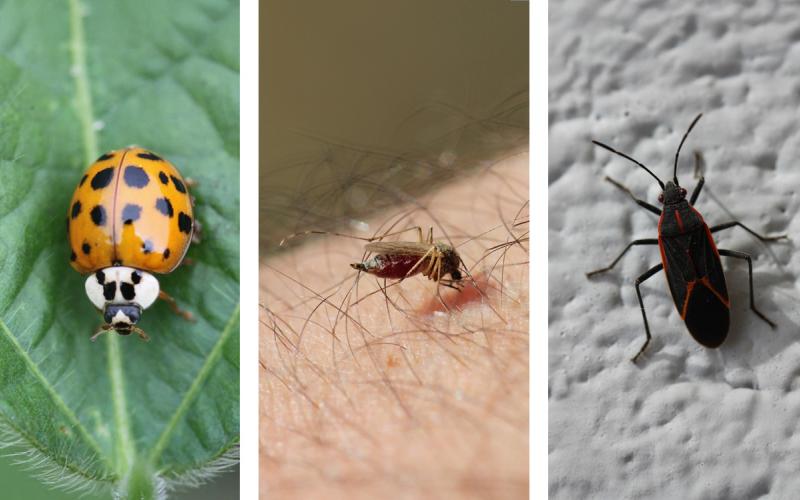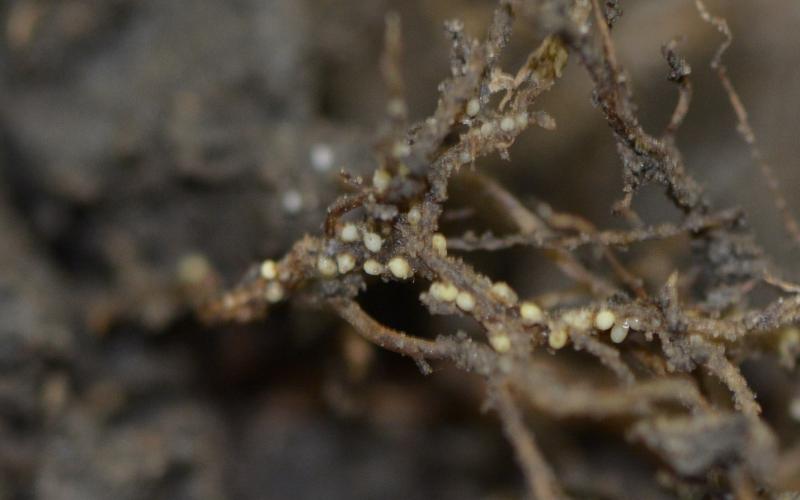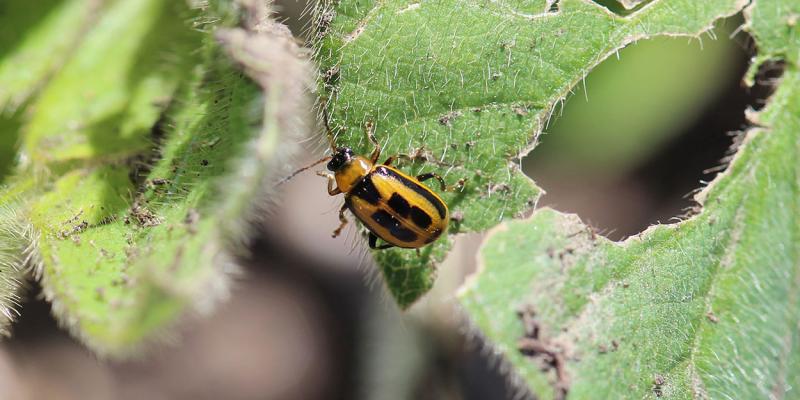
Written with contributions by Shelby Pritchard, former SDSU Extension Pest Management Specialist.
Originally Submitted: June 9, 2022
Soybeans in South Dakota are being targeted by the overwintering population of bean leaf beetles. Bean leaf beetle activity seems to be greater in the southeastern portion of the state so far, but activity was also observed near Volga, South Dakota. Although a previous article estimated that bean leaf beetle survival in South Dakota was likely close to zero due to cold winter air temperatures, there is always the possibility that suitable cover prevented the high levels of mortality (2022 South Dakota Overwintering Bean Leaf Beetle Predicted Mortality).
Scouting and Management
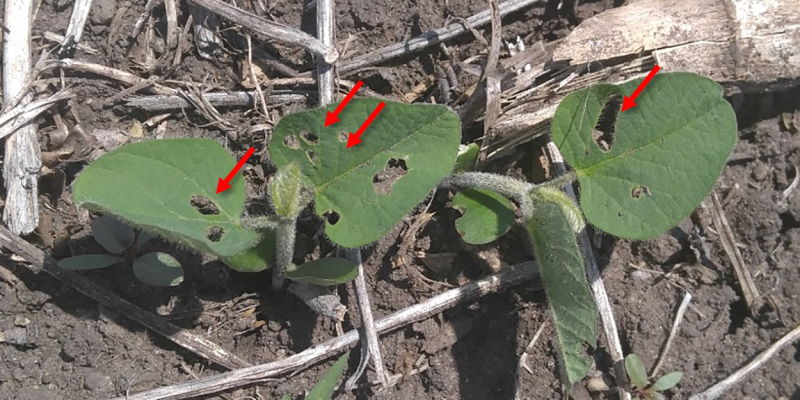
The first issue that comes to mind when dealing with an early-season pest is how much defoliation is too much. For bean leaf beetles, the recommended threshold is 20% defoliation prior to flowering. But estimating the percent defoliation on the unifoliate leaves can be tricky. An alternative method is to count the number of adult bean leaf beetles per plant.
To scout for early-season bean leaf beetles, examine 20 plants in five different areas of the field. If you are using the defoliation threshold, look for holes in the leaves, as well as feeding on the stems or cotyledons (Figure 2). Management is recommended when an average of 20% of the leaf tissue is removed from the scouted plants (Figure 3).
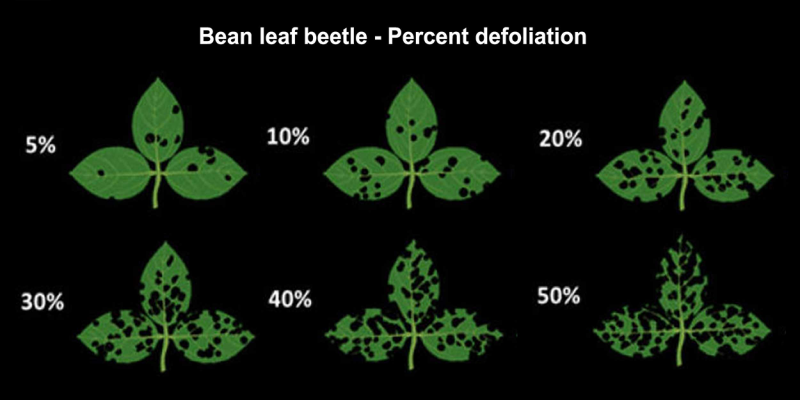
Although sweep nets can be used later in the season, emerging soybean should not be swept to avoid breaking plants. Instead, use visual counts of bean leaf beetle adults. To do this, look at three feet of row, or approximately 20 plants from five different areas throughout the field.
When counting adults, it is important to avoid disturbing the plants, as bean leaf beetles will often drop to the ground. Avoid casting a shadow on the plants that are being scouted, as that will also cause beetles to drop from the plants. The adult bean leaf beetles can vary in color from brown, orange, yellow, red and varying shades of those colors.
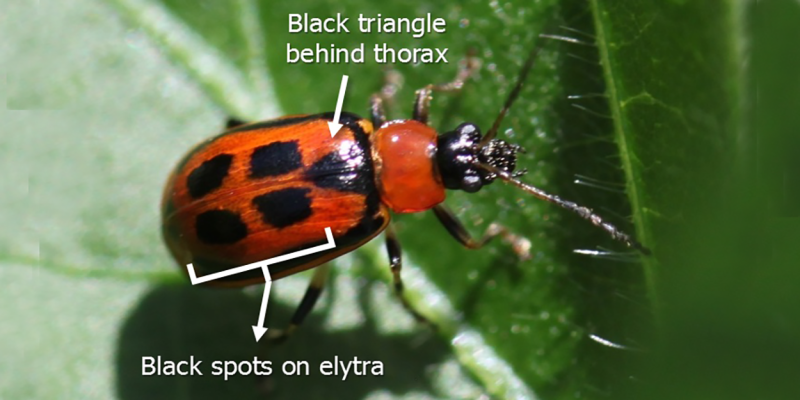
Adults can be identified by the black triangle present behind their thorax (Figure 4). Adults will also have black heads and will generally have four spots on their hardened forewings (elytra). Management should be considered when you observe an average of 2 to 4 bean leaf beetles this way.
Products labeled for bean leaf beetle in South Dakota can be found in the latest South Dakota Pest Management Guide for Soybeans.

